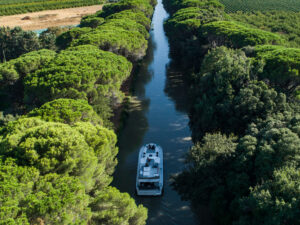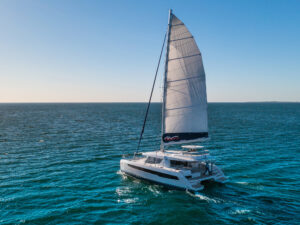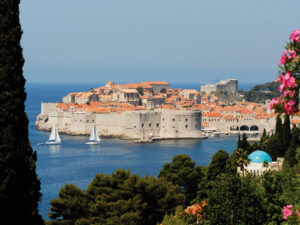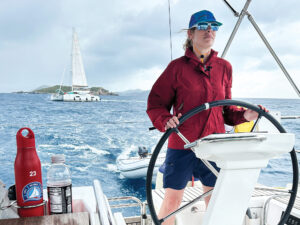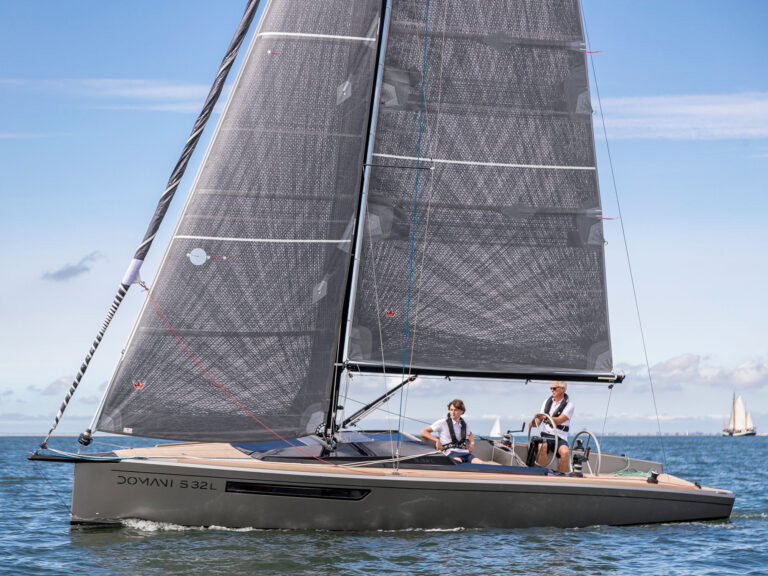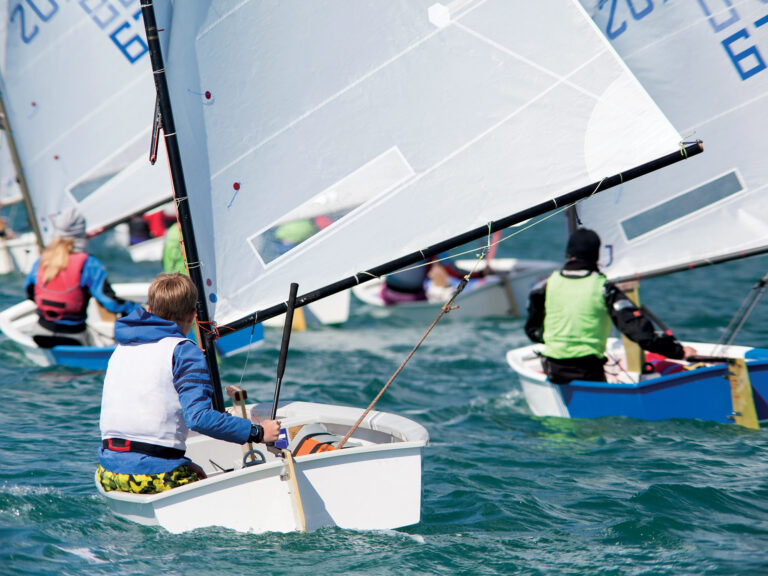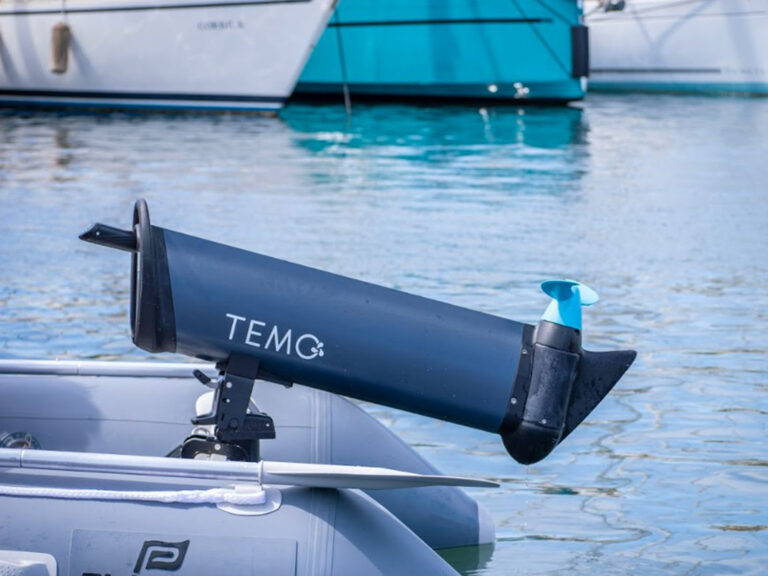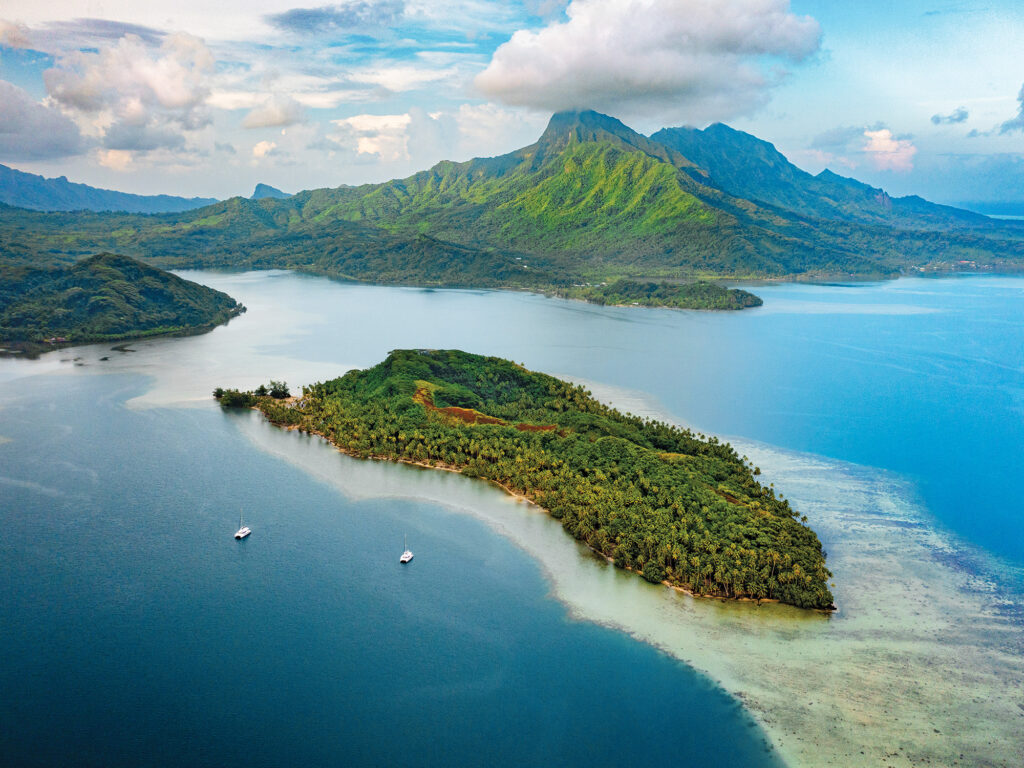
Oh, my God,” the local kids shouted and giggled. One by one, they jumped into the water from the side of a concrete boat ramp and came to the surface, repeating what they had just heard us say as we did the same thing to cool off after a long afternoon of chart and boat briefings at The Moorings charter base on Raiatea, a gem of a destination in the Leeward Islands of French Polynesia.
From the water, I watched their mothers chatting the late Sunday afternoon away in the shade of a stand of trees. To the north, I took in the unfamiliar shapes of the daymarks lining the channels, and the coral between our harbor swimming hole and the island of Taha’a, a couple of miles away. It was all but impossible to keep my eyes off the iconic rocky peak of Mount Otemanu, shrouded in tropical haze on Bora Bora, some 20 miles to the northwest. I’d seen it in pictures hundreds of times as I read South Pacific adventure tales.
But now, oh, my God, indeed: Here we were. We were going sailing. In Tahiti.
It took three days to get there from wintry Boston, with an evening stopover in Los Angeles and a second night spent in a hotel in French Polynesia’s capital city, Papeete. From there, photographer Jon Whittle and I, along with the trip’s organizer, Josie Tucci from Sunsail, and one her friends from Florida took a morning flight on a small commuter plane to Uturoa, Raiatea’s main commune. Our travels ended with a short cab ride to the Sunsail docks nearby. For the next few hours, eight more sailing and golfing friends of Tucci’s wandered in, ready to help celebrate her big 5-0 aboard two roomy cruising cats: a Sunsail 505 for the birthday girl, and Magic Dancer II, a Sunsail 454, for Whittle, me and overflow guests.
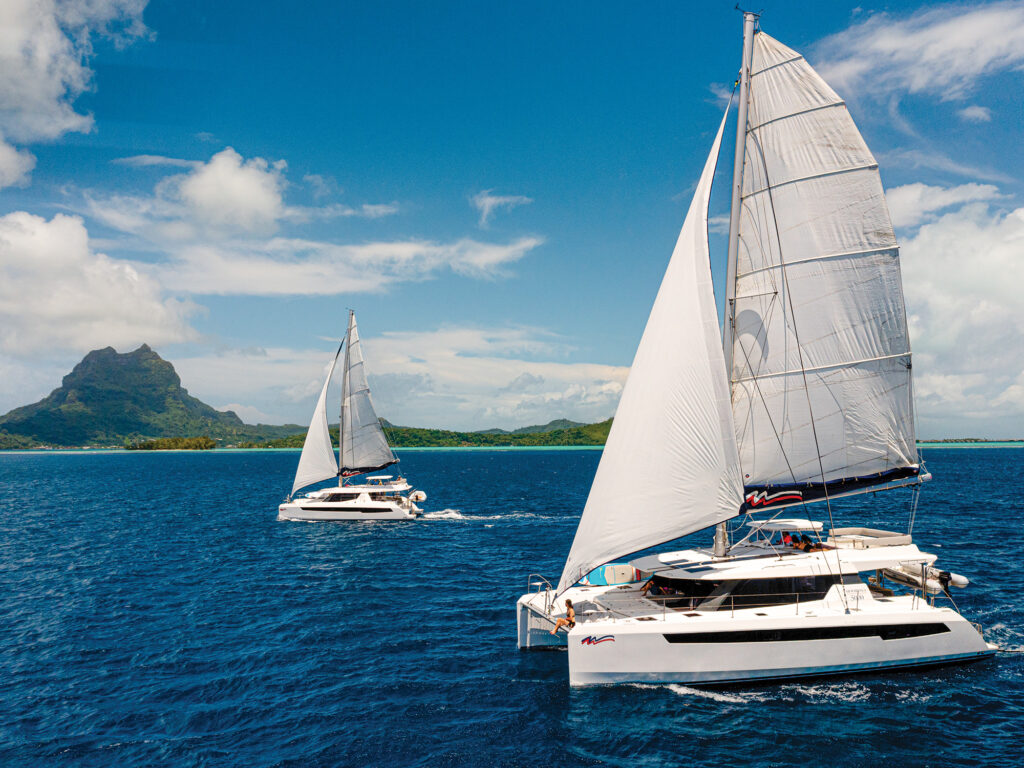
Most of the sailing we’d be doing for the next 10 days would be around the large islands that sit inside extensive coral barrier reefs, so the chart briefing was quite detailed. A local skipper went over aids to navigation, points of interest, anchorages and the like. He stressed to us North American sailors that Lateral System A is used in this part of the world, with red marks left to port, not starboard, when entering passes from the open water. Inside the lagoons, square red daymarks designate dangers toward land; green triangles show hazards along the reef; and various configurations of triangles atop poles indicate whether to leave obstructions to the north, south, east or west. We took detailed notes on large paper charts and downloaded a cruising guide PDF that would be consulted frequently throughout the trip.
There are four main islands within the group. Two of them, Raiatea and Taha’a, are quite close and within the same barrier reef. Between them lie well-marked shallows and coral beds, so sailing back and forth is fairly simple.
Bora Bora and Huahine are another story. To reach them, open-water passages of about 20 miles are required, with a long slog upwind either going or returning, depending on the island. Early-morning departures are required so that upon arrival, passes can be navigated while the sun is high. An eye on the weather is also recommended because conditions can get boisterous.
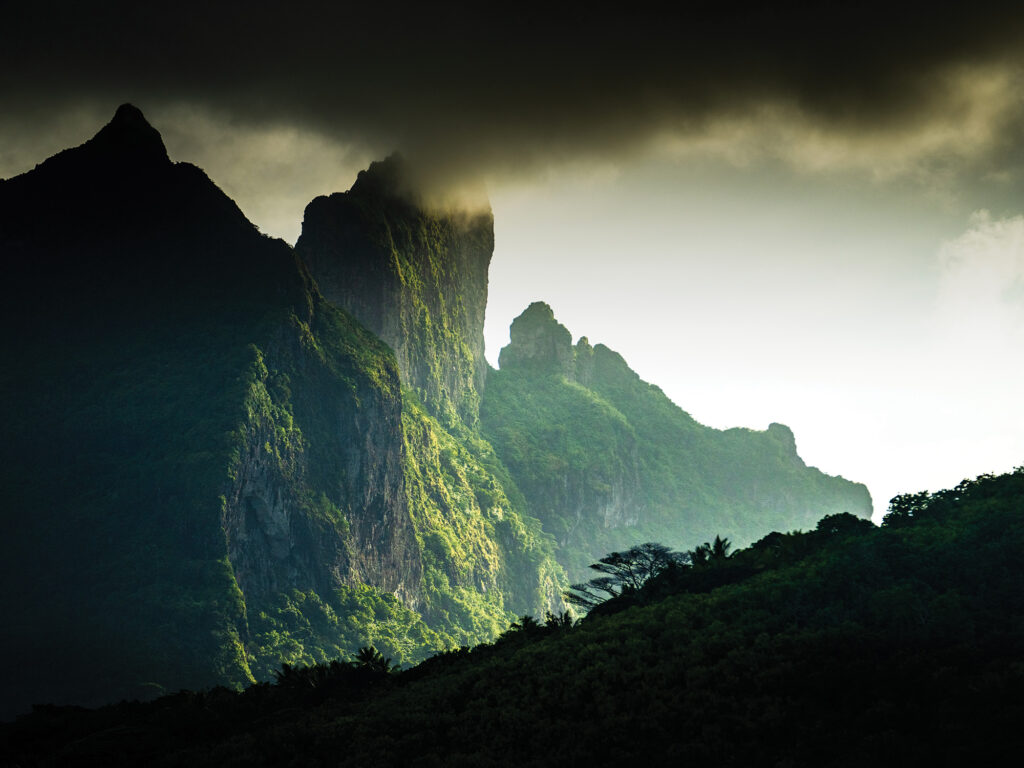
Midafternoon, the briefing formalities were put on hold for nearly an hour when a troupe of local musicians and dancers came to welcome us. They handed out leis and headbands made from colorful local flowers, including tiare apetahi blossoms, which grow only high in Raiatea’s mountainous interior. The men sat with their instruments and played Polynesian tunes while the dancers, a mix of women and children, twirled and shimmied their grass skirts in lively routines handed down from their ancestors.
It being a Sunday, all stores had closed at noon, so provisioning had to wait until Monday. Early in the day, a couple of us from each boat took a taxi to the Champion market in downtown Uturoa, a bustling urban area where the cruise ships dock. Though all of the islands in the group have grocery stores of some sort, we were advised to get the bulk of our provisions here. The market was well-stocked, but with all goods needing to be shipped in across the vast Pacific, prices were steep.
Back at the boats, we loaded supplies and topped off water tanks. By late morning, it was time for the adventures to begin. First stop: Passe Rautoanui, an opening through the reef on the northwest side of the island.
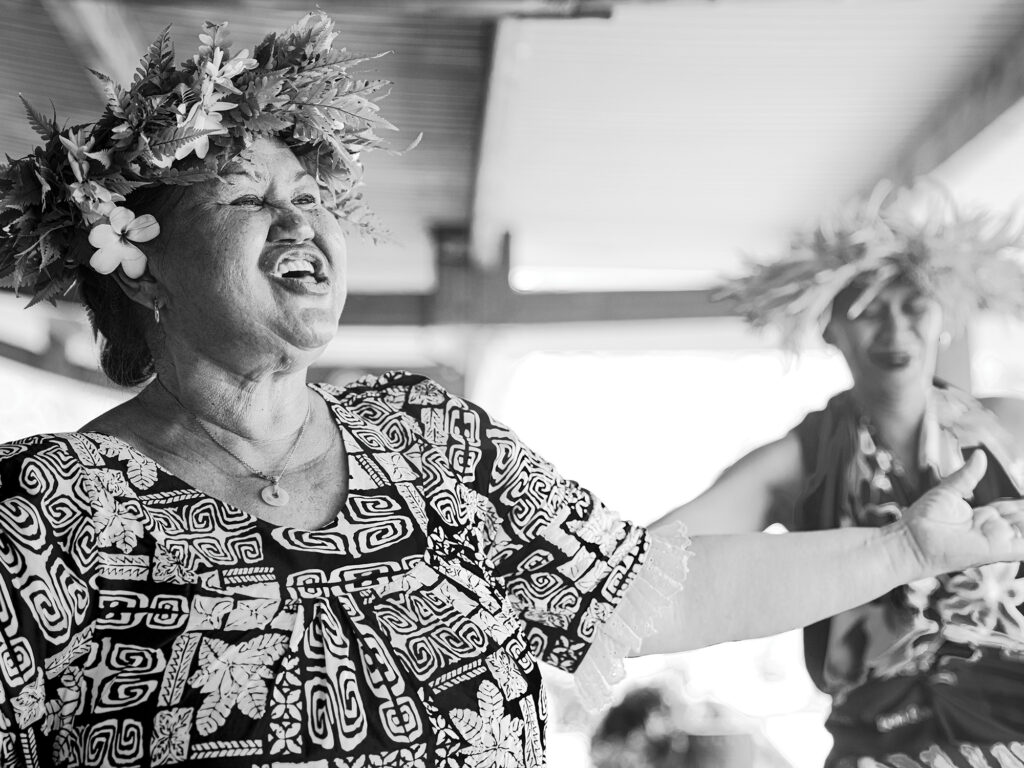
As we approached, we picked out the cardinal marks indicating the opening. White waves crashed on the coral reefs to either side, but the water between them was dark blue and deep. Outside, we rounded up into an offshore breeze gusting to 20 knots or so. We went with a single reef in the main, unfurled the genoa, and settled in for an easy reach south to Passe Punaeroa, about 8 nautical miles away.
Ashore, the mountaintops disappeared into the haze and clouds. The colors—blue sky, green jungle, white breakers on the reef—were spectacular and everything I’d imagined French Polynesia would be.
Back inside the lagoon, Tucci’s boat led the way along a narrow channel around the southern end of the island to a tiny anchorage behind Motu Nao Nao. We’d been told during the briefing that there’s room for only three or so boats, and there was already a large monohull there, so we aboard Magic Dancer II opted for a mooring a mile or so away in deep water off another small motu, or island. We took the inflatable across to join the festivities underway aboard what already had become the party boat. Nao Nao was the perfect place to spend a hot afternoon with a cold beverage and snacks. A few of us took off snorkeling over the nearby coral heads. It was an excellent transition to island time.
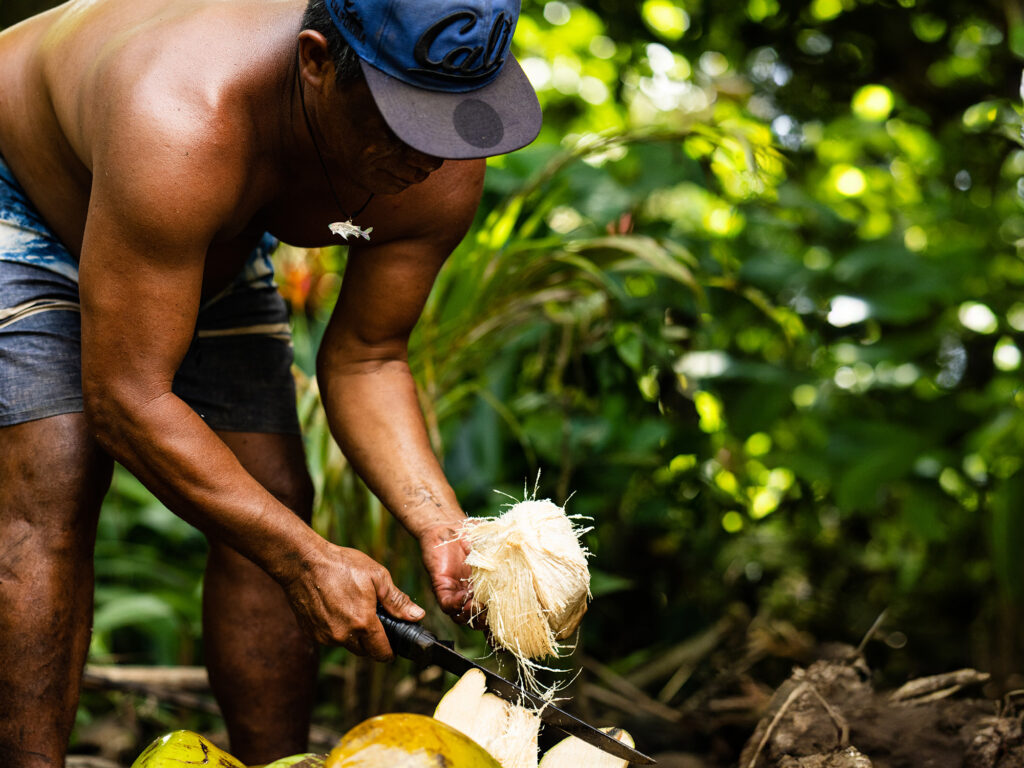
With evening approaching and the sky clouding over, I hopped into the dinghy alone, figuring I’d make better time motoring solo back to Magic Dancer. I didn’t make it far from the swimming hole, though, before the sky turned black. Time to turn back to the cat that stayed at anchor to ride it out? Nah. I pressed on and almost at once got gobbled up in a white squall that came rolling through with ferocious gusts, stinging rain, and lots of lightning. That was a dinghy ride to remember.
Tuesday, we continued the counterclockwise tour of Raiatea, the largest island in the Leeward Group. Late morning, we anchored in about 30 feet of water, deep in Baie De Fa’aroa, a fjord located about halfway up the island’s eastern side. From there, several of us took two inflatables up the Apoomau River. We were told that it’s the only river trip in all of French Polynesia, and we soon discovered spectacular glimpses of Mount Tefatuaiti with its towering rock walls and deep valleys shrouded with mist. Our destination was the botanical garden near the headwaters.
It was slow-going, with many sunken trees and shallow spots to dodge. Along the way, we met a local man who, for a modest fee, paddled his faded orange kayak ahead of us and gave us a guided tour of the gardens. On the way back, we stopped at his camp, where his wife and daughter wielded machetes to cut up coconuts, red papayas, grapefruits and bananas for us. We ate so much fruit that we almost didn’t need the lunch of shrimp curry and rice that Tucci’s sailing mate, Paula, had cooked while we were gone.
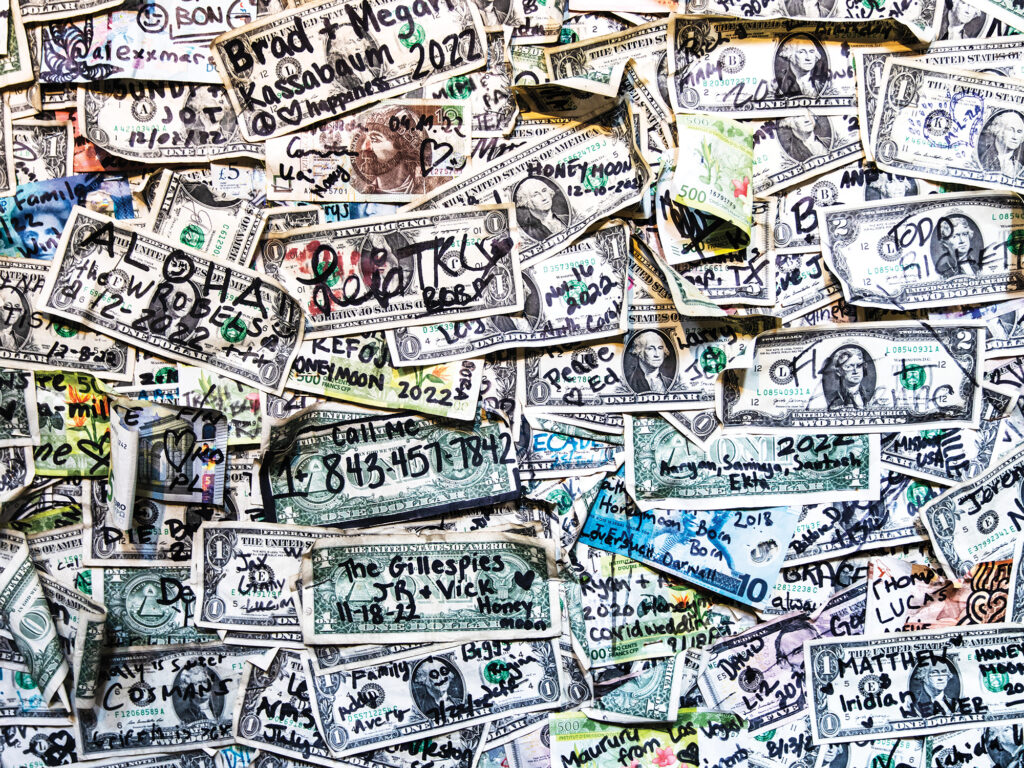
Later that afternoon, we tried to visit the small village of Marae, home to an ancient Polynesian temple, but the holding was poor and evening was coming, so instead we found a sandy spot to anchor on the reef off Pointe Tamapua. The crew voted to go ashore for dinner at the Opoa Beach Restaurant, where the ginger tiger shrimp were indeed a delicacy, as promised on the menu.
Early Wednesday morning, the big-boat crew set off for the airport in Uturoa to pick up a late-arriving guest. We lingered a bit for a swim and breakfast before hoisting sails and reaching across flat water along the shore. At the top of the island, we found the marks for a channel skirting Grand Banc Central shallows, which lie between Raiatea and Taha’a, and crossed for a lunchtime rendezvous with the big boat in Baie Apu, an anchorage on the southern end of Taha’a.
From there, we motored up the west side of the island until we spotted the Motu Tautau and a cluster of luxury bungalows built out over the water, the La Taha’a by Pearl Resorts. We anchored just south of them in a sandy spot with about 7 feet of water. The breeze was brisk, so I stayed behind to watch the boats while the rest of the crew took the tenders and motored past the resort to a channel between a pair of small motus. Once they secured the boats, they walked up-current along the shore of one of the islets, and then jumped in for a fast snorkel back to where they’d started. Everyone returned raving about the ride.
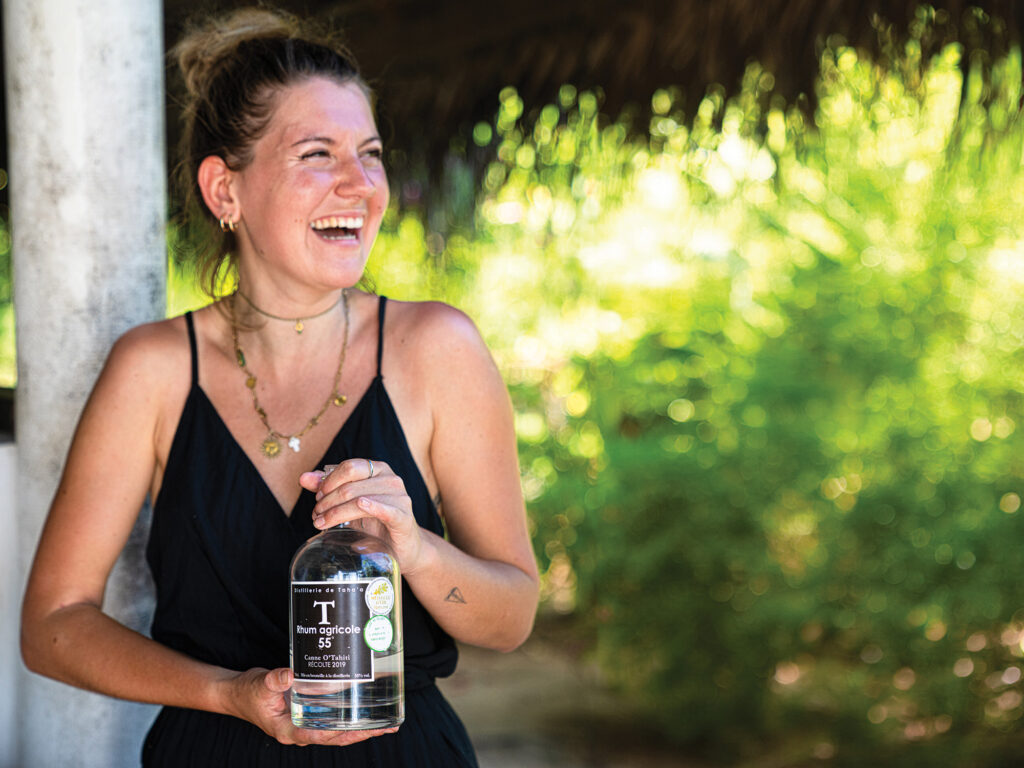
For me, the highlight of the trip came the next day, when our little armada set off for Bora Bora. After a brief motorsail south to clear the reef through Passe Papai, we killed the engines and started off on what would be our longest day of sailing.
Out of the lee of Taha’a, Magic Dancer lived up to its name, slicing and surfing through big trade-wind swells. According to the chart, our desired heading was 293 degrees, but trying to steer that in a blustery southeast breeze of 15 to 20 knots proved nearly impossible because of the constant threat of an accidental jibe and the jib being blanketed. Instead, we crisscrossed the rhumb line on a series of broad reaches—each one bringing the towering peak of Mount Temanu more clearly into focus—until we finally spotted the iconic light that marks Pointe Te Turi Roa on the southeast corner of the reef surrounding Bora Bora.
Along the way, we spotted flocks of birds diving for baitballs roiled up by tuna and other big fish. Occasionally, an interisland freighter or fishing boat came into view, but for the most part, we were on our own, out on a great big sea, surrounded by whitecaps and having a ball. Or at least some of us were. The others, well, they spent the time nursing cases of mal de mer.
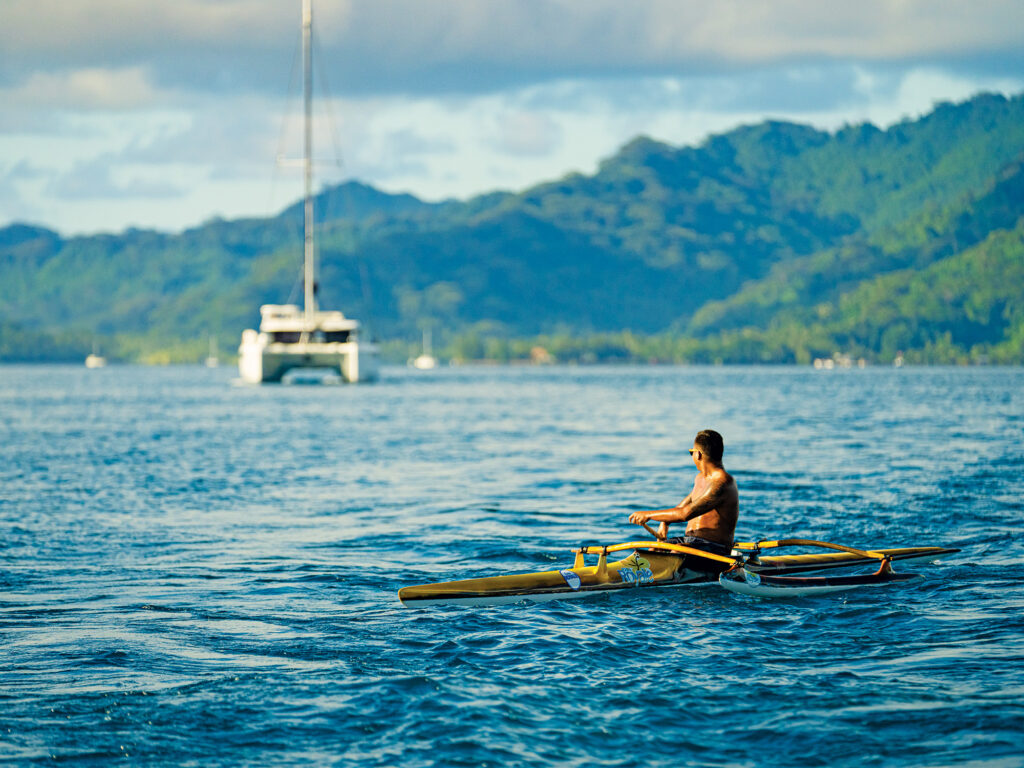
The birthday boat was ahead of us at the light, but by radio we called them back so that Whittle could launch a drone and get photos of the two cats sailing along the edge of the reef. It was a surreal scene: the boats side by side on a deep blue ocean, a long line of frothy white surf where the swells piled up on the coral, the tranquil lagoon just beyond with the lush green island in its center. Overhead, the white clouds had greenish-blue bottoms because of the sunlight reflecting upward off the water. It was a lot to take in.
There is only one way in and out of Bora Bora: Passe De Teavanui, which is about halfway up the island’s western shore. It was midafternoon when we arrived, and once through it, we had a straight shot to the mooring field at the Bora Bora Yacht Club. We went ashore to the club for dinner and topped off the evening playing Boule, a bowling game, on sand courts near the bar.
Friday morning, a few of us walked the shore road to an ATV trail cut into the jungle-covered hillside. It was a steep climb to the top, but the reward was a stunning view of the lagoon below and a couple of cruise ships that had just arrived.
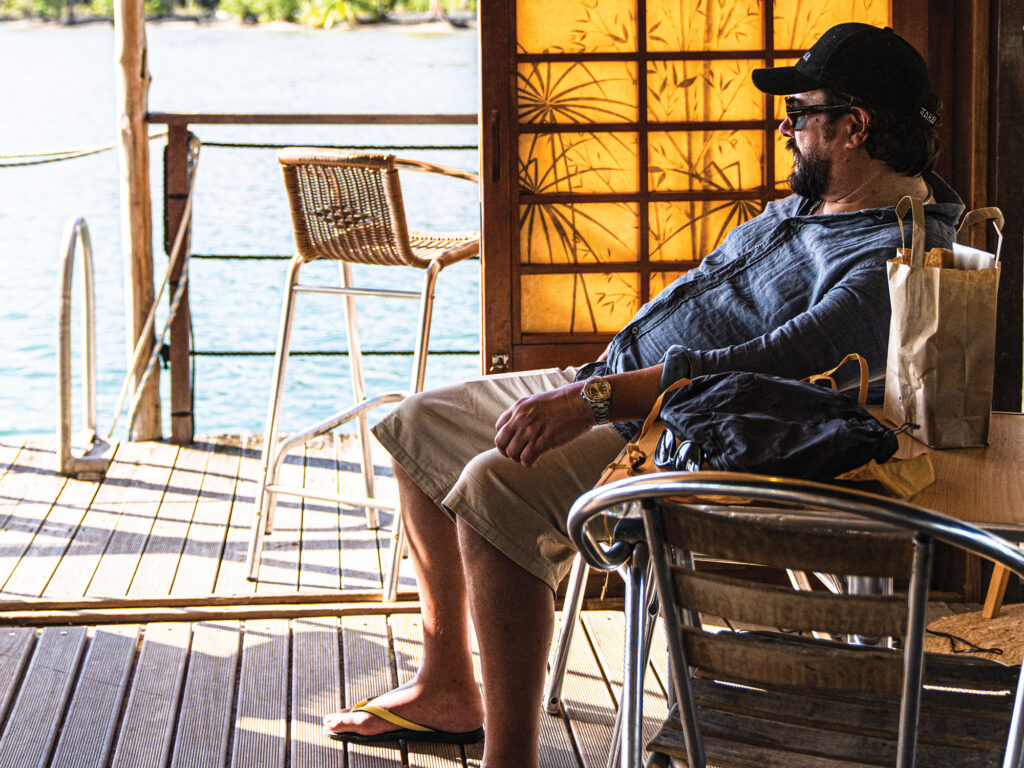
That afternoon, we got underway and followed a twisting channel inside the reef across the top of the island and down the eastern side. Though it was windy, the breeze was, for the most part, on the nose, so we motored. To be honest, it was a nerve-racking trip through shallow water teeming with coral heads. Off to port, numerous resorts were built on stilts over the water and reef. They were well-marked on the chart and helpful as we tried to keep our bearings straight.
Anchoring is not allowed within the reef at Bora Bora, but mooring balls are plentiful all around the island. We grabbed ones off a sandy beach at the southeast corner of the lagoon and settled in for an afternoon of swimming that slowly faded into star-filled night. Overhead, the Southern Cross and Orion kept us company.
In the morning, a few of us jumped into the inflatables with snorkels and fins and went exploring in a marine park by two small islets a mile or so away. There were a couple of tour boats from nearby resorts when we arrived, but soon they cleared out and we had the place to ourselves. We found fish and coral aplenty in 10 to 12 feet of water.
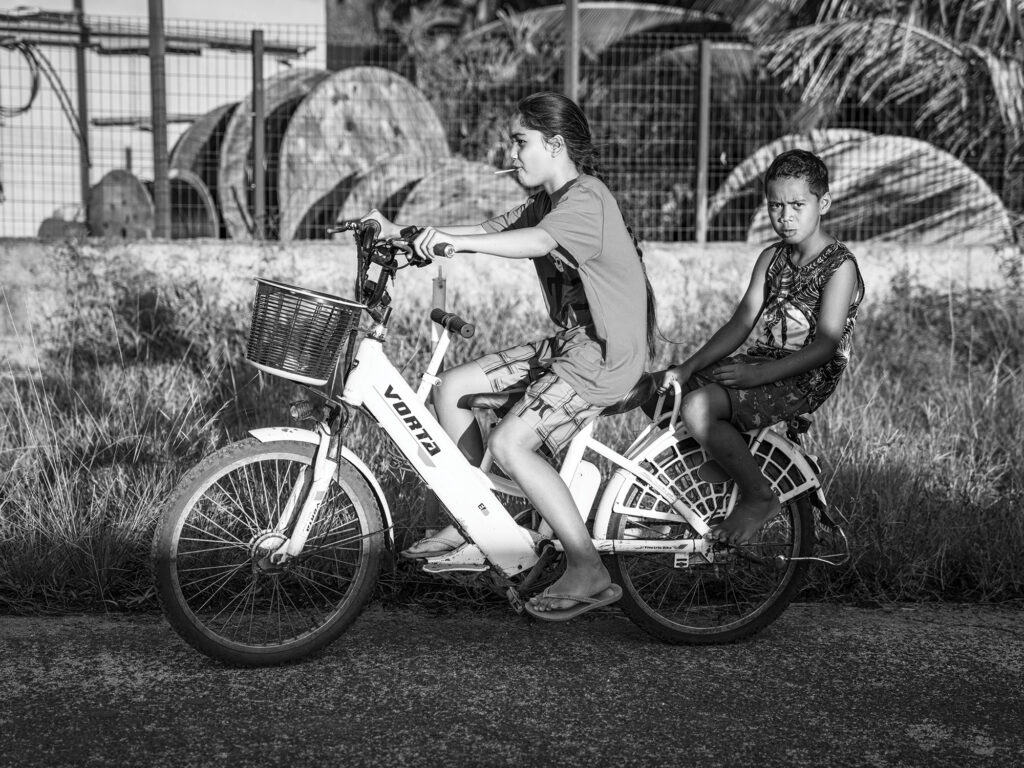
That afternoon, the trip back around the island was simple: All we had to do was follow the track we’d laid down on the chart plotter the day before. Near the north end of the island, a kayaker fell in behind us as we motored by at 6 knots. He hitched a ride on Magic Dancer’s wake for 2 or 3 miles. It was an impressive paddling demonstration that the fellow put on.
For lunch, we made a stop at Bloody Mary’s, a popular shoreside bar and restaurant. As we ate, a band appeared on stage and locals started to wander in for what seemed to be turning into a Saturday-afternoon ripper. We took it in for a while, then headed back to the boats and went to find a mooring out near the reef on the western edge of the lagoon.
The original plan was to head back to Raiatea on Sunday morning, and from there, sail to Huahine for a day. To pull it off, we’d need to keep moving, and personally, I was looking forward to three more long open-water crossings. But some of the others who’d suffered on the way up weren’t so keen. On any charter, and especially one with a large contingent of nonsailors, keeping the crew happy is paramount. So, it only made sense to scrap the plan. Instead of spending Sunday at sea, we’d play. Hard.
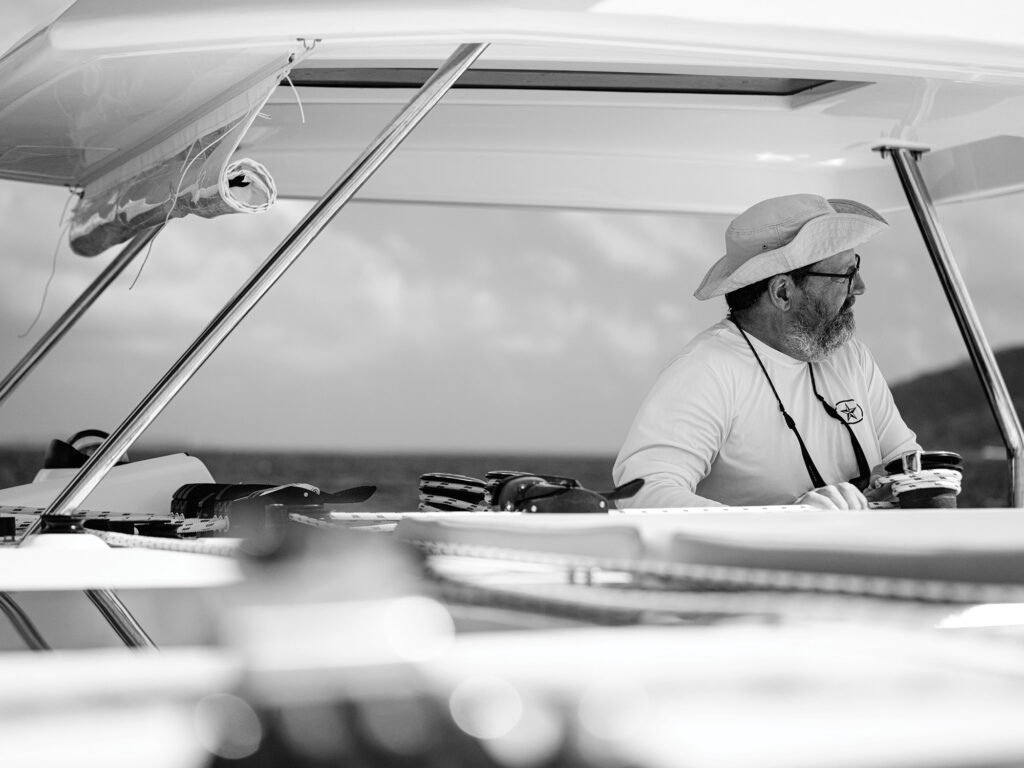
The next morning, we explored nearby sandy motus. In the shallow waters around them, we swam with small blacktip sharks and searched for rays. After lunch, we all kicked back on the big cat, where a couple of techs from the charter company appeared with a motorboat and wakeboard. The scene only became more festive as more powerboats filled with locals zipped by, many of them pulling tubes loaded with screaming kids.
Along toward sunset, as a dinner of chicken curry simmered on the stove, Tucci’s friends decorated the boat for the birthday bash that turned into a laugh-filled night of music and revelry.
Monday started slow. We motored back to the mooring field by Bloody Mary’s and made a provisioning run for supplies to last us to the end of the trip. Then we took the tenders across the shallows at the southern tip of Bora Bora that keep big boats at bay. Besides seeing the southern tip of the island, we wanted to check out the good snorkeling area we’d visited earlier. It was a long, wet ride in the small boats, but well worth it once we got there. Visibility was better, and the fish were easier to spot and more plentiful.
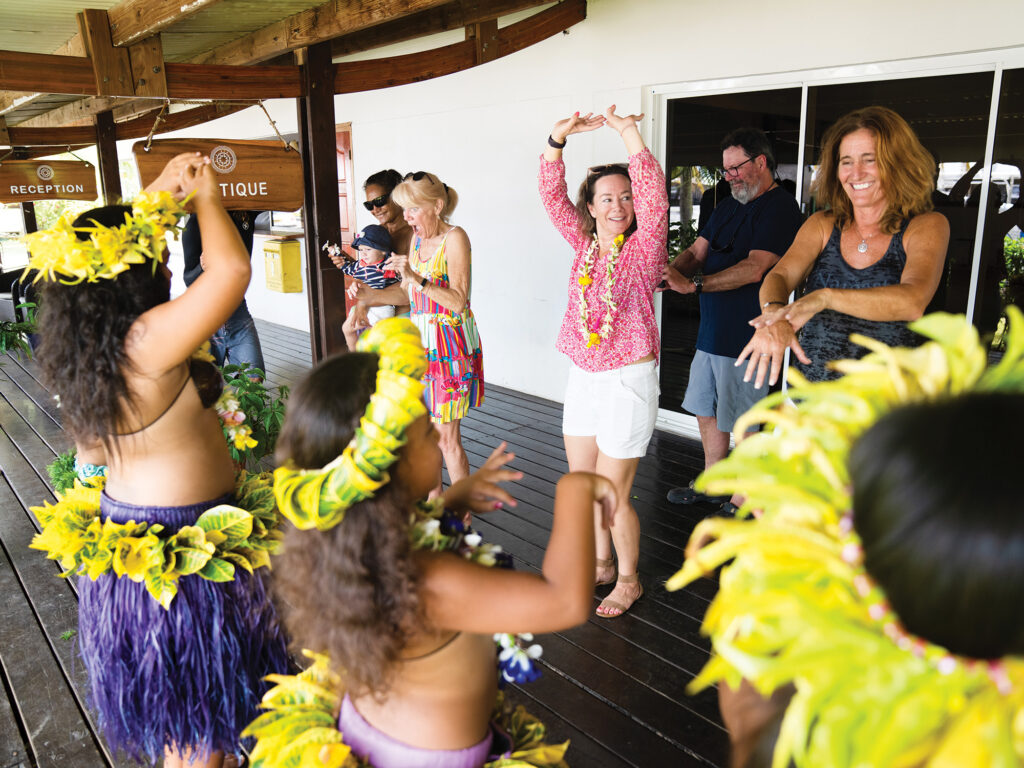
The sea was glassy and the wind was initially calm for our return to Taha’a on Tuesday. As we passed the lighthouse on the corner of the reef, a breeze began to stir, so we raised the main and motorsailed closehauled, pointing as high as we could. Then, with 6 miles to go, the wind suddenly kicked up to near 20 knots on the nose and brought with it waves that made it a slow slog the rest of way to the pass back through the reef at Taha’a.
Inside, we motored north again along the island’s west coast and picked up a mooring in Baie Tapuamu, across from where we’d anchored a week earlier. The big cat arrived soon after, and following lunch, we headed ashore for a tour of Domaine Pari Pari, a local rum distillery. The white rum had a raw taste to it, not anything like the Caribbean rums most of us were used to. But it was drinkable enough, poured over ice on a hot afternoon.
Wednesday was our last full day aboard the boats. In the morning, we took our snorkeling gear and went by inflatable a short way up the coast, where we were told we might find rays. Just when I thought we’d been skunked, I watched a single manta ray come up from the depths. It had about a 6-foot wingspan and wild-looking markings on its back. Most everyone got a glimpse of it gliding along the shallows before it disappeared back into the deep.
Back in the tenders, we pushed a bit farther north until we spotted a dock and buildings where we thought we might find a spot for lunch. Instead, we’d landed at the Iaorana Pearl Farm, said to be the largest in French Polynesia. The farm manages some 2 million oysters in the waters surrounding the island.
We were introduced to a man whose job it is to sit at a desk and implant small pebbles taken from the Mississippi River and sent to Taha’a via Japan into some 300 oysters a day. The oysters are then affixed to strings and returned to the water for 18 months, when the pearls are ready to be harvested. Several of the crew purchased necklaces and such. It was hard to pass up such unique souvenirs from an unexpected stopover.
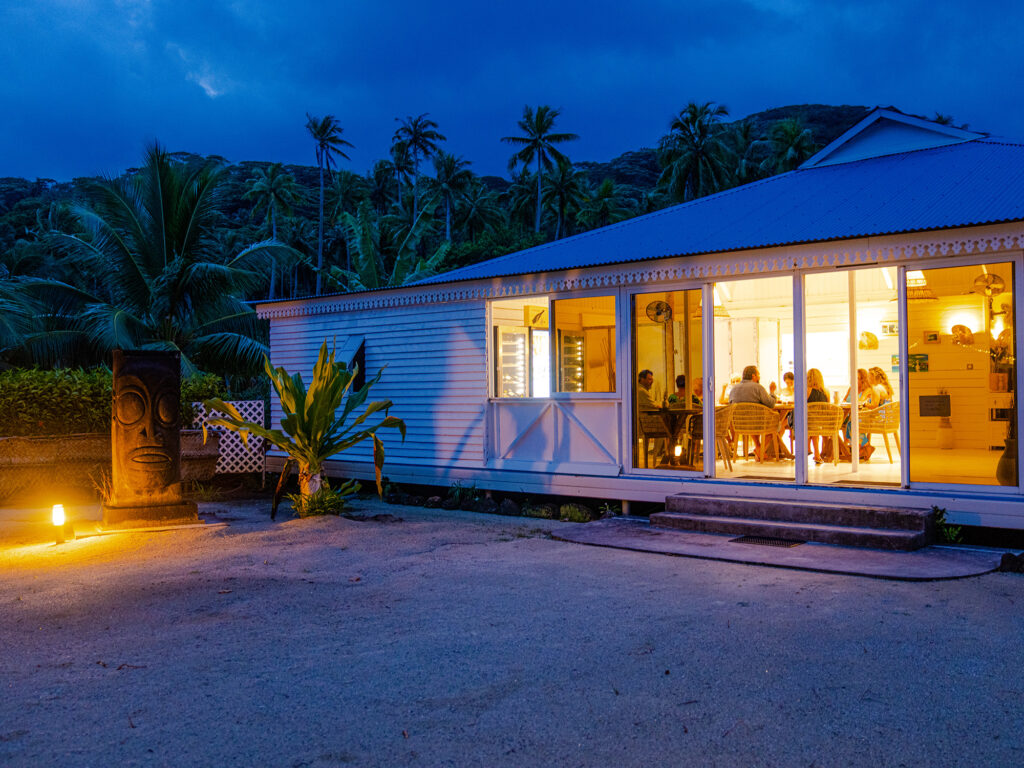
Midafternoon and back at the boat, it was time for one last motorsail, so we set off for Raiatea, where we dropped anchor on the reef, not far from the charter base. There was still swimming to be done and merriment to be had, but I could feel my sense of island time slipping away as we checked plane reservations and packed. That evening, we went ashore to the Fish & Blue restaurant for a last team dinner. And of course, we sat up a little too late for a last glimpse of the Southern Hemisphere’s night sky. What else would anyone do on their last night in the Society Islands?
Mark Pillsbury is a CW editor at large.
If You Go
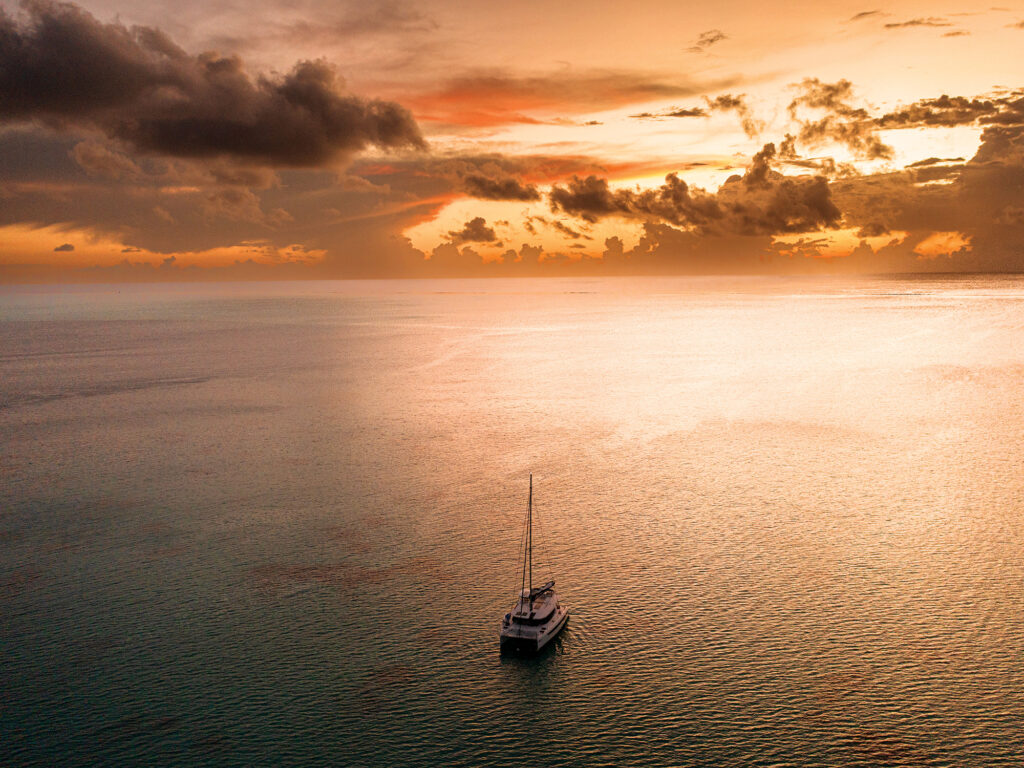
Our flights to Papeete, Tahiti, were booked on Air Tahiti Nui, which has regular flights from Los Angeles. From the US East Coast, it was easiest to plan an overnight at a Los Angeles hotel. Our flight across the Pacific was aboard a clean and comfortable plane, decorated in soothing tropical pastels. It’s a long flight but endurable.
From Papeete to Raiatea, we flew Air Tahiti. Flight time is just under two hours; a four and a half-hour ferry ride is a cheaper alternative.
Provisioning at the base in Raiatea is straightforward but expensive. Eating out is even more so: A $50 bill for lunch per person was common for our group, and a hamburger cost $15 to $18.
Most charter boats come equipped with chart plotters. Still, I found that having an iPad loaded with Navionics cartography was a great help within the reefs. It allowed us to have one chart zoomed out and the other zoomed in for details. When the onboard chart plotter stopped functioning one morning as we traveled along the south coast of Raiatea, we were able to carry on by iPad until I could reset the recalcitrant equipment. —MP

